
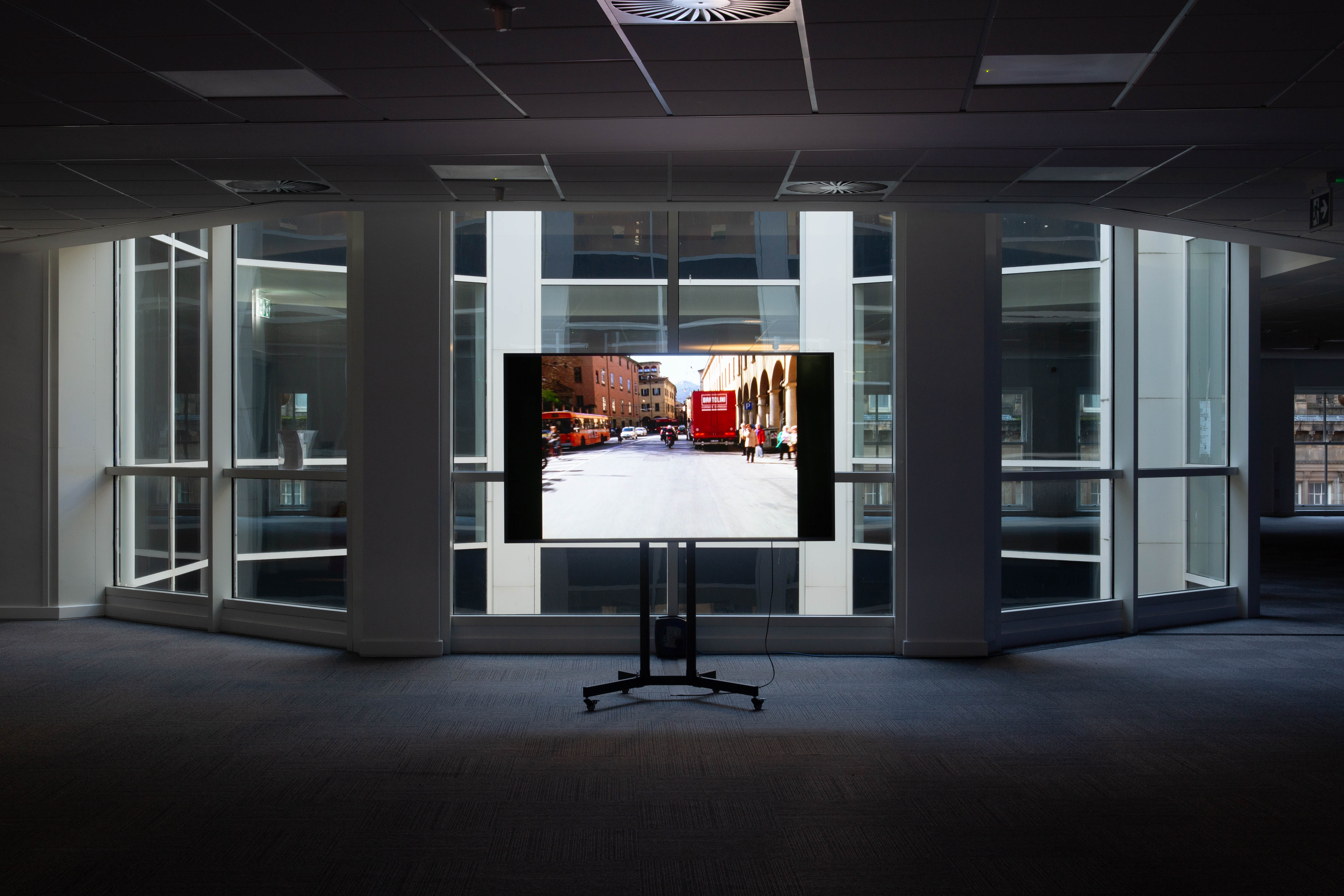
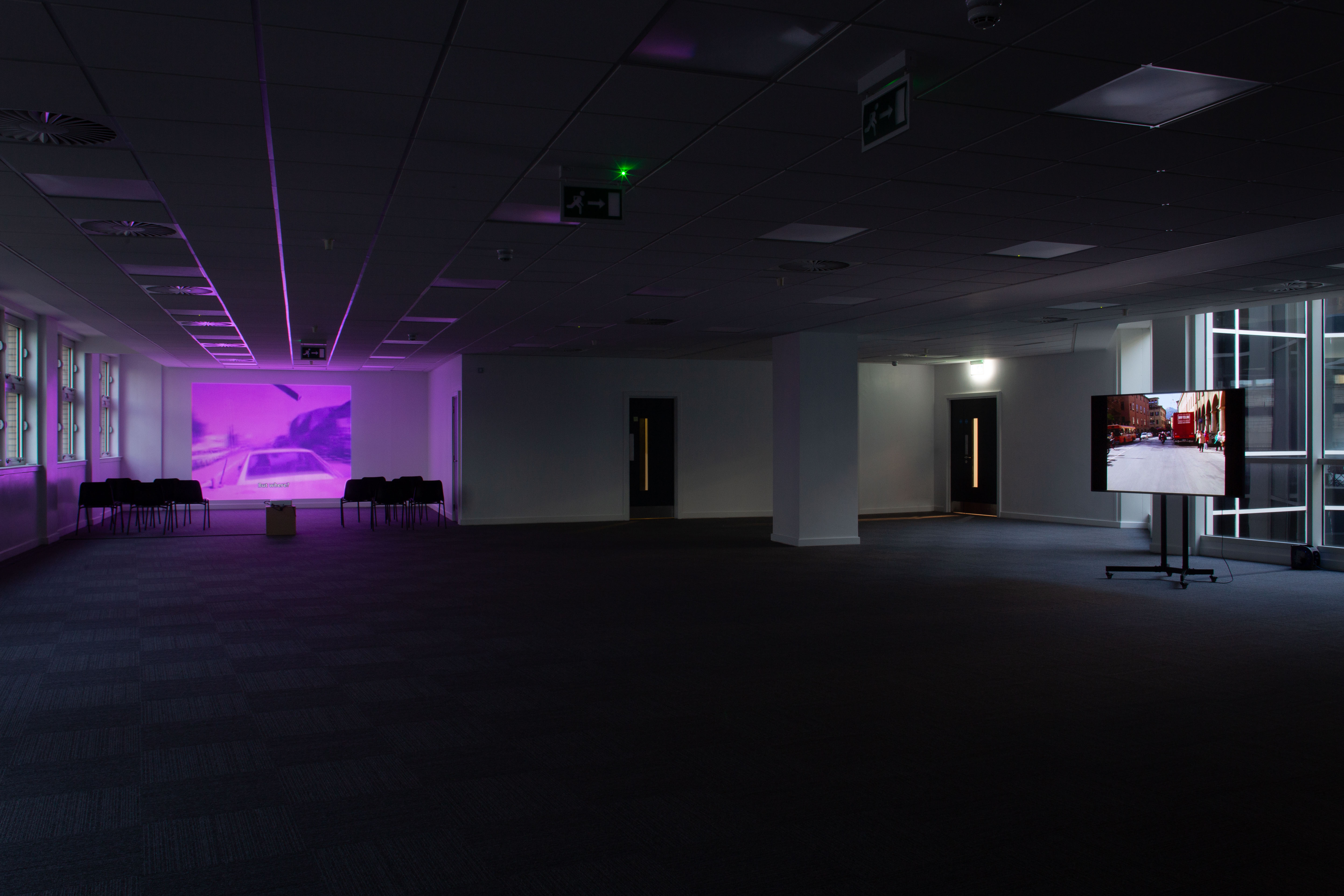
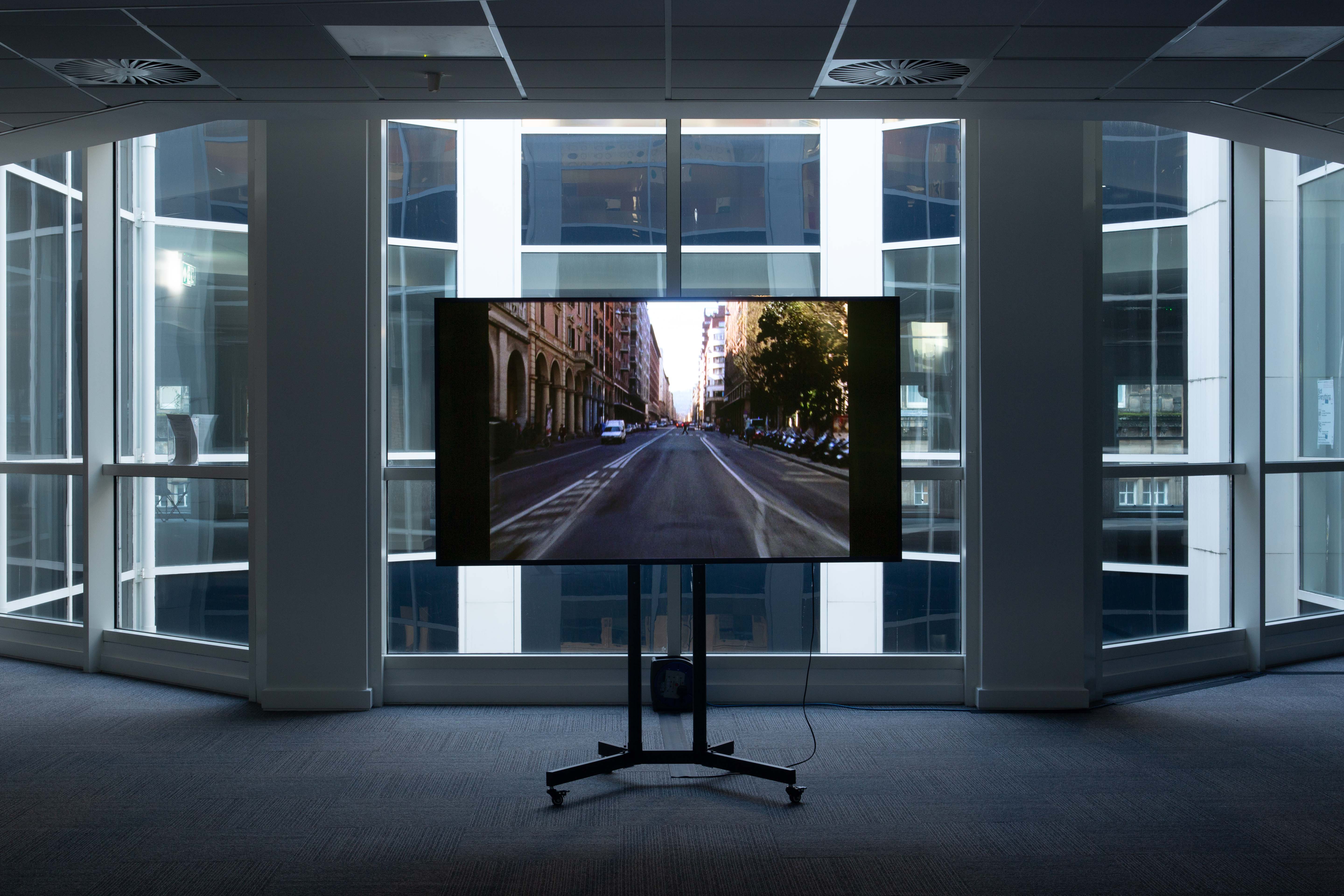
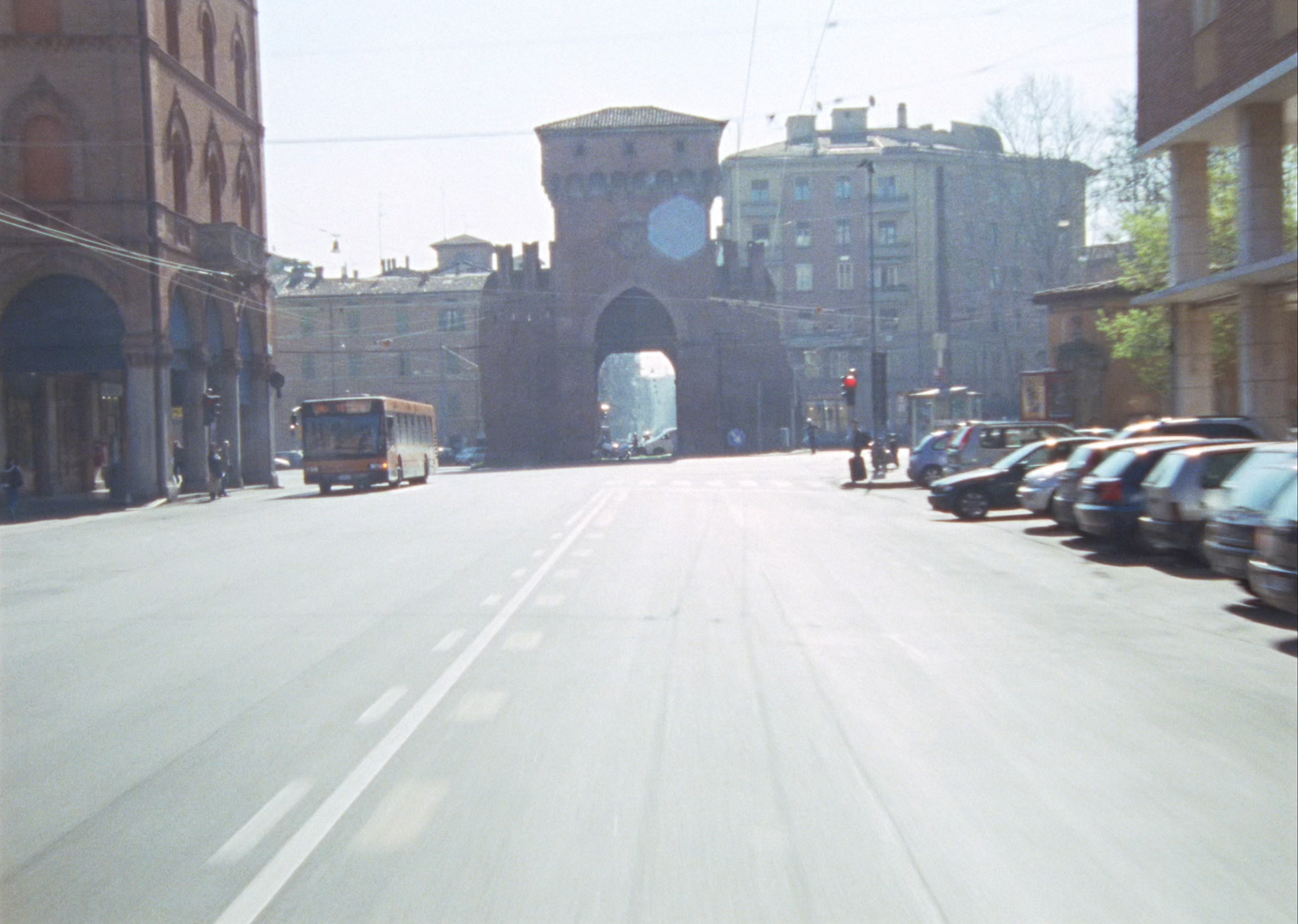
Jay Chung and Q Takeki Maeda, Caducean City, 2006
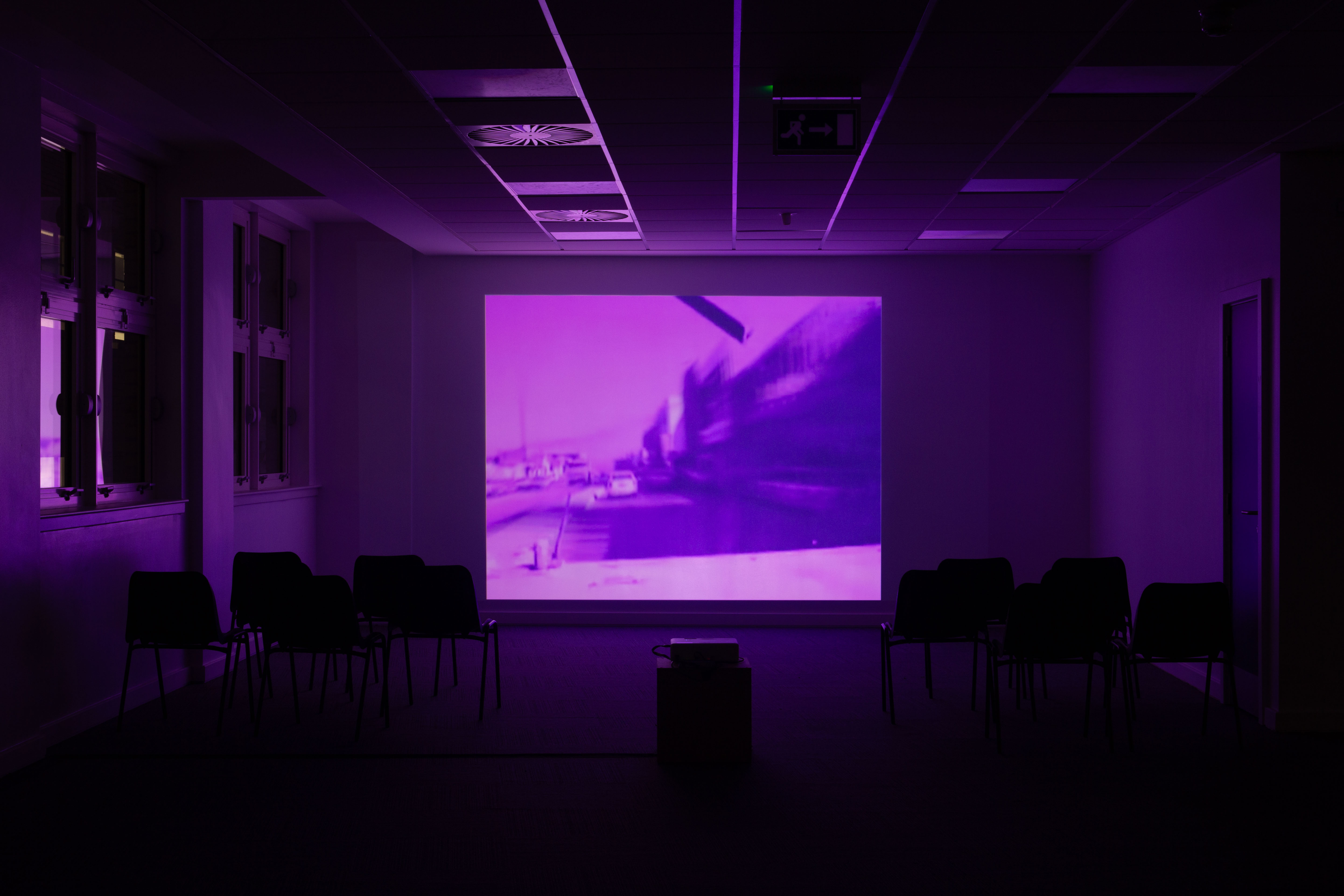
Silvia Kolbowski, After Hiroshima Mon Amour, 2008

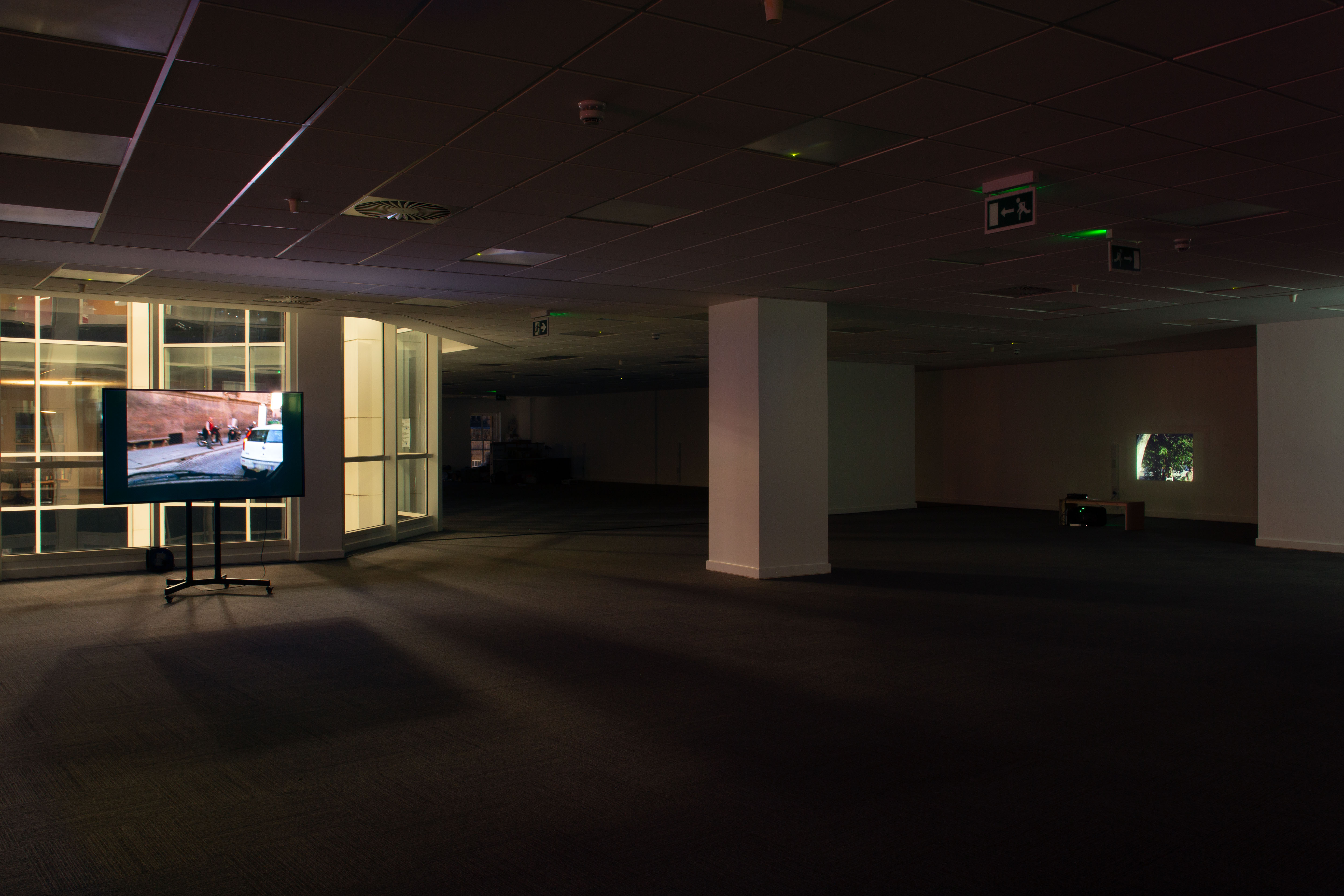
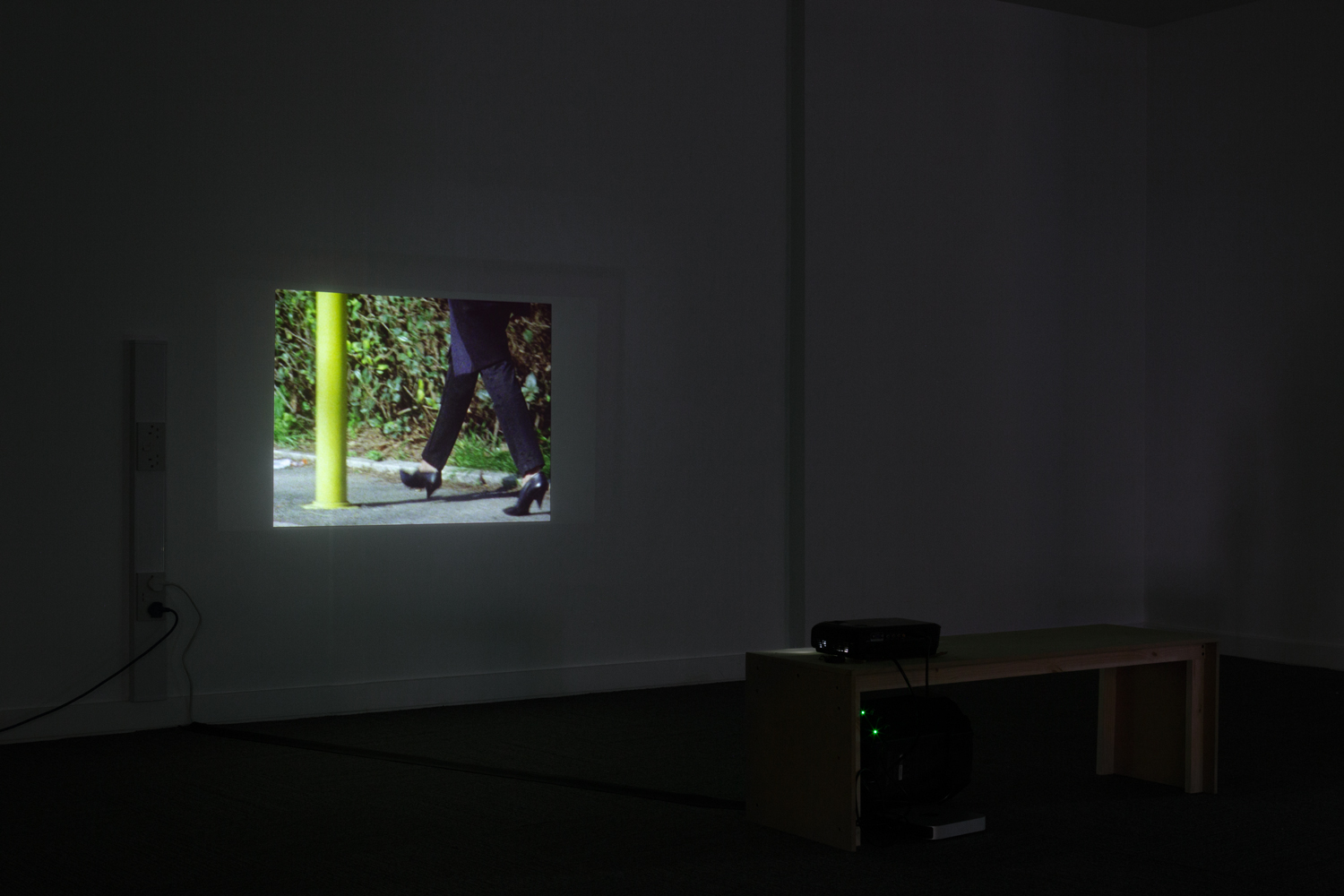
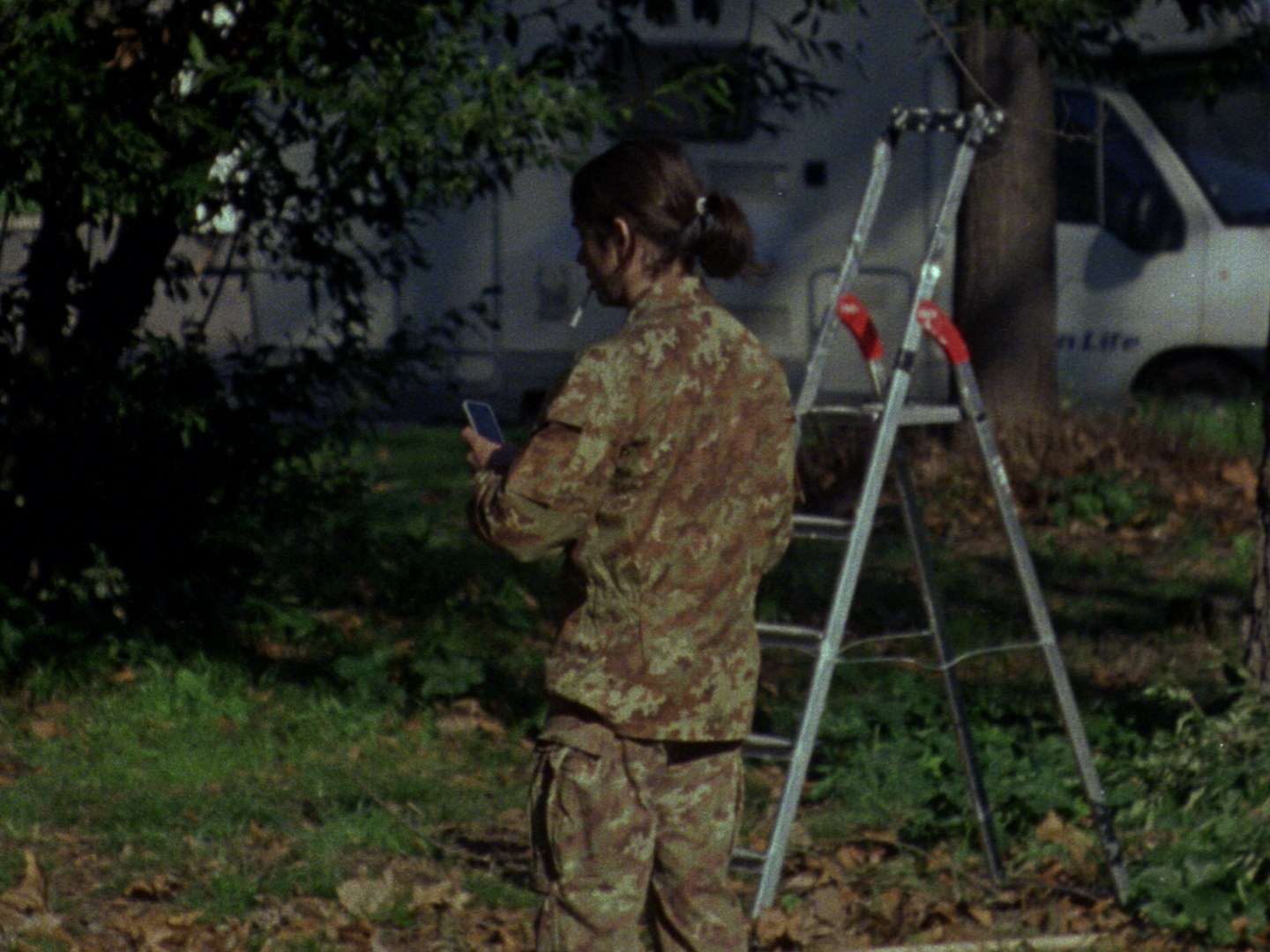
Not Everything
26th October
A video exhibition curated by Dora Budor, as part of Between Not Everything and Not Nothing
with Nick Bastis, Jay Chung and Q Takeki Maeda & Silvia Kolbowski
A question of what is and makes a whole, and what is a part, lingers in the air. Not Everything brings together videos and films that operate through a disruption or deassemblage of filmic (representational and presentational) unity. The breaking down of the marriage of sound and image, credits, subtitles, voices, and actors occurs through reenactment, repetition, and deassemblage.
Screening Notes:
Nick Bastis, Resolutions Dogs (2018/2024)
16mm film, digital transfer, borrowed sound and subtitle files. Various lengths).
Resolutions Dogs is a digital package that contains an original silent movie and borrowed sound and subtitle files. It is conceived of as a little machine, dispensing various surfaces of information which struggle to make contact but do–through genre, ‘beat,’ and mimesis. In the filmed scenario, soldiers, trees, camouflage, and the cinematic registers through which they all appear, seem to have misunderstood an Order. What is watched, heard, and read are not hard-coded together but are played in tandem, coming in and out of consonance, each with their own cadence and inflection.
Jay Chung and Q Takeki Maeda, Caducean City (2006)
4K projection (original 16mm film). 26 min
On one day of no special significance –April 4, 2006– at about 10 o’clock in the morning, an ambulance moves through the streets of the city centre and suburbs of Bologna, following a labyrinthine and apparently grotesque itinerary that becomes an endless loop within the map of the city. The ambulance is not carrying anyone to safety. Instead, it exemplifies and renders visible the implicit rules of the social contract whereby every individual regards themselves as the same as everyone else in relation to a public institution, and respects a tacit agreement based on fundamental norms of behaviour. In Caducean City (2006), Jay Chung & Q Takeki Maeda limit themselves to filming, in real time, the minimal possible variations with which this universal agreement is interpreted by the anonymous passers-by that the ambulance happens upon in the course of its journey.
Caducean City was made for an exhibition with the Museum of Modern Art Bologna (MAMbo) in 2006, and presented at the local cinematheque. The execution of the project relied upon the understanding and cooperation of the museum and the public institutions, including the city hall, fire department, and police, to allow the ambulance for its high-speed travel with active sirens yet absent a patient. Following protracted negotiations, an exception from the city’s laws and regulations was granted. “Caducean” is a word that refers to two serpents entwined around a staff, used as a symbol of medicine and negotiation.
Silvia Kolbowski: After Hiroshima Mon Amour (2008)
Video/16 mm black-and-white film. 22 min 14 sec
Developed over a three-year period (2005-2008), After Hiroshima Mon Amour began with the intention to look at sites of American military incursion and governmental neglect through the lens of the celebrated 1959 film Hiroshima Mon Amour, directed by Alain Resnais and written by Marguerite Duras. After Hiroshima Mon Amour uses various visual and aural strategies to layer and analyse instances of violence and trauma. Here, the Iraq war and the abandonment of Katrina are looked at through the lens of the American bombing of Hiroshima.
The allegorical couple of Resnais’ 1959 film is played by ten interconnecting actors who blur distinctions of ethnicity, race, and gender, undermining the categories that are often used to rationalise violence. Titles, silence, brief sync sound, and music are used to create a new story out of an old one. Various scenes in black and white are faithfully recreated from the original film. They are joined with contemporary material downloaded from the Internet, a remix of the score and sound design of the original, and particular uses of colour, which become other characters in the video.
